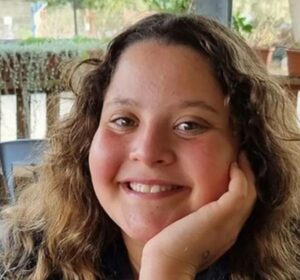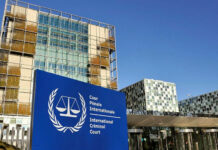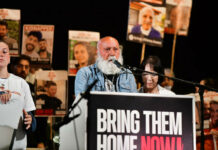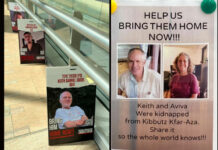
Rabbi Claire Magidovitch Green
Parshat Metzorah
This portion is the prism through which I view the loss of four family cousins on Oct. 7 at Kibbutz Be’eri.
This d’var Torah is in the place of my family’s cousin, Yanai Hetzroni, z”l, who would have become 13 this week and celebrated as a bar mitzvah this Shabbat. His twin sister, Liel, z”l, would have celebrated the first anniversary of her bat mitzvah. Today is Shabbat haGadol, the great Sabbath before Pesach, the Festival of Our Liberation. The price of freedom is great.

Initially, we were told that two cousins had been murdered and two others taken hostage. So, there was a double funeral Oct. 23 for the 12-year-old boy, Yanai, and his grandfather, while we all hoped that Yanai’s twin sister and their great aunt would be found. But, later, there was yet another double burial (Nov. 15).
What can this strange portion in Leviticus tell me about the suffering of our worldwide Jewish family, the infighting among our people, the hostility among competing absolutists and the emotional fires that are being lit so close to Jewish communities around the world.
In this portion, there seems to be an unfairness to the steps addressed to the metzorah, the one who is driven out of the camp because of his skin ailment. Even as his external symptoms subside, he can’t just go right back home. That takes time, special treatment and sacrificial offerings. Only then will he be allowed back into the circle where he’ll be able to access the Beit haMikdash tabernacle where the community centers its life affirming activities.
Our parsha begins with the metzorah’s participation in a social community. The rabbis determined that the illness of the metzorah’s body was caused by an illness in the community in the form of lashon hara, that is, trash talk — because it hurts the community as a whole and undermines its strength and eats away at society from the inside.

How can we teach a person — or a group — that lashon hara language is dangerous? How can we stimulate an individual to reflect and own his words? First, the offender has to be separated so that he/they understand[s] that lashon hara undermines social life.
Right at the beginning, we read about two wild birds of the field. This pair of ritual animals reminds us of the two goats of Yom Kippur. One is slaughtered, the other banished to die in the Azazel wilderness.
Like the goats, one bird is slaughtered, and the other one sent away from the camp. Like the goats, one dies in the place of human society. But that’s where the similarity ends. Whereas the second goat of the Yom Kippur ritual is also killed, albeit outside the camp, the second bird in today’s parsha goes free. The metzorah’s live bird that he brings as an offering will not be sent to a wilderness death but, instead, it’s directed to the open fields that surround the city. Those fields have a rich variety of nonhuman life — flora and fauna. So, this bird is sent from the human zone to the place of the animals.
Yes, one bird dies a ritual death in an earthen vessel filled with water from a “live,” ever-flowing spring. That spring represents the continuity of our life — our immortality. During their lifetimes, my cousins’ immortal souls were each housed in an earthy container. Everyone expected that they would continue to elevate themselves and those around them. That’s what life is all about.
That’s what the Hetzroni family wanted to celebrate this Shabbat. The animalistic, wild, unhinged part of society must be slaughtered, that is, brought under the control of our moral sensibilities. Spiritual energy must be channeled. If not, more than just wild birds are at risk.
The metzorah is not given a lecture by a priest; the afflicted one and community onlookers are presented with a dramatic purposeful learning scenario. The metzorah’s first step must be to give up the belief that he can live his life as free as the wild birds of the field. That idea has to be completely sacrificed. Living a life of free expression without restraint is not possible as a member of a community. Doing that leads to death as sure as the bird that was killed with the slaughter’s knife … as sure as my cousins were slaughtered.
The peoples of the world are being squeezed to decide whether to condone the trash talk of lashon hara that devalues persons and peoples in the eyes of others. Evil words are the portal to evil acts. A chasm stretches between the organized human community and the wildness that surrounds it. That gulf between humanity and insanity is symbolized by the seven sprinklings of the bird’s blood on the metzorah’s forehead and hand, his personal tools for thought and deed.
Torah inspires us to model, encourage and demand communication devoid of lashon hara. At the farewell ceremony for Liel and her aunt, a classmate read an excerpt from Liel’s favorite song (“You Have Me” by the Israeli band T-Slam), “Go now, shine like the sun, you have wings, fly far.”
Rabbi Claire Magidovitch Green, the granddaughter of the first municipal engineer architect of Tel Aviv and the daughter and sister of rabbis, is a specialist in translating the Jewish way of making meaning to those who feel that our culture is static and irrelevant. The Board of Rabbis of Greater Philadelphia is proud to provide diverse perspectives on Torah commentary for the Jewish Exponent. The opinions expressed in this column are the author’s own and do not necessarily reflect the view of the Board of Rabbis.






